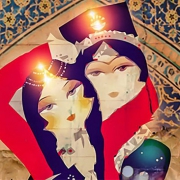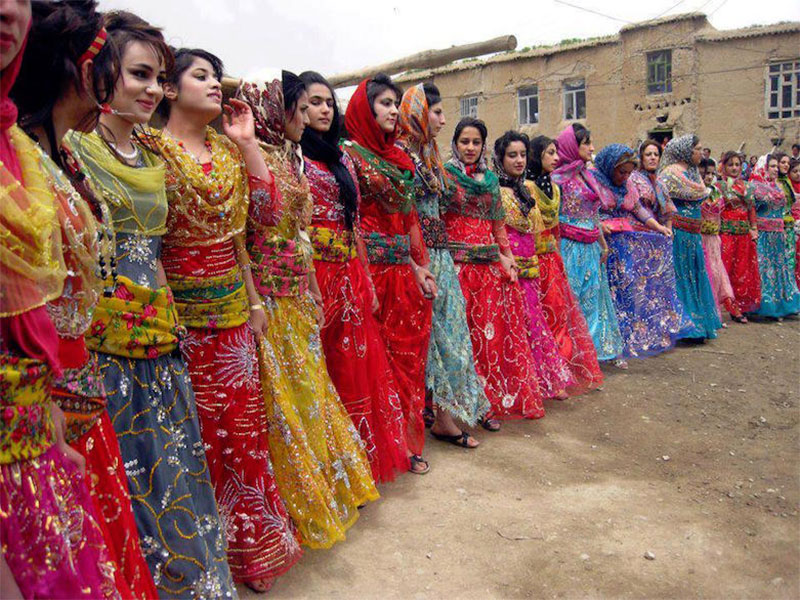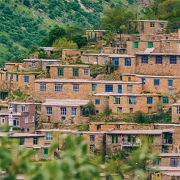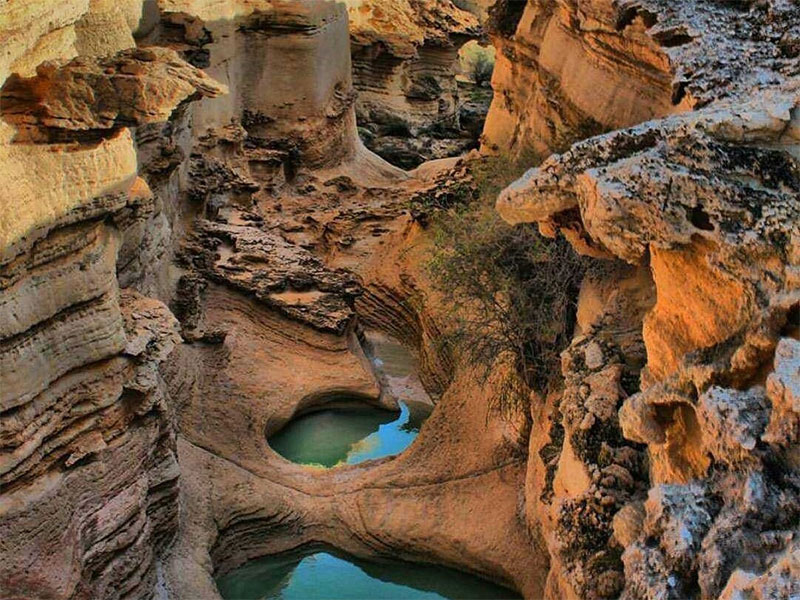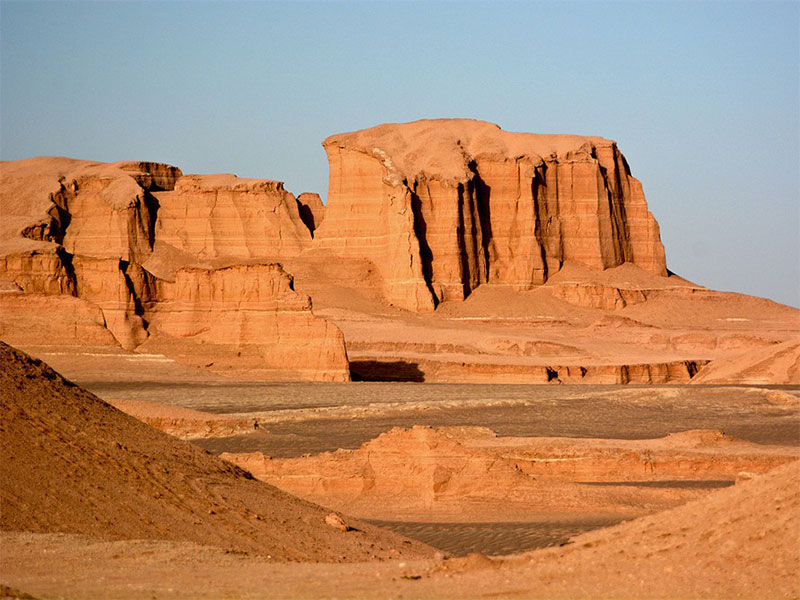If you are also a fan of places that have recorded their names in history, come on board! As a country with numerous world heritage sites, Iran is one of the top countries in the world. Moreover, Iran is home to 28 UNESCO World Heritage sites. The Hyrcanian forests and the Lut Desert are two of Iran’s Natural UNESCO world heritages. United Nations Cultural Organization registered Carvenserais as a World Cultural Heritage in 2023, and on July 27, 2024, Ecbatana was officially added to the World Heritage List, making the number of Iran’s world cultural heritages reach 28. Following that, the Esfahak Village in Tabas was named one of the best tourist villages for 2024 by the UN. Here, we will introduce you to ALL of the UNESCO World Heritage Sites in Iran.
Northern region
Soltaniyeh
As one of the best sites in Iran, Soltaniyeh stands proud with its stunning turquoise-blue dome and octagonal architecture. In the 14th century, Soltaniyeh was the capital of the Ilkhanid dynasty in Zanjan province. This beautiful monument has exquisite architecture inside and outside and mesmerizes you with its huge size and gorgeous detailed decorations. Turquoise-blue tiles cover the exterior of the dome, making it appear huge and imposing. The dome is surrounded by eight slender minarets, but their function is unknown.
Golestan Palace
A fine example of Qajar architecture and Persian crafts, the Golestan Palace displays a successful fusion of Western influences. A precious gem in the heart of Tehran, it houses memories from the Safavid era through the Pahlavi era. Golestan Palace in Tehran is one of the most spectacular places you will visit during your travel to Iran. Besides Golestan Palace, you can also pay a visit to a nearby Zoorkhaneh, where a Pahlavani ritual takes place. Inscribed as a Pahlevani ritual by UNESCO, the ritual has been practiced for a long time.

Golestan Palace in Tehran is one of the most spectacular places you will visit on your travel to Iran.
Persian Garden
The Persian garden, in many ways, resembles paradise on Earth. The general pattern of a Persian garden (Bostan) is a rectangular form consisting of four quarters abundant in trees and flowers. Persian gardens feature streams and pathways, ponds and fountains, usually a central pavilion, and the walls surrounding the garden. The Persian gardens are so remarkable that nine out of a wide variety are listed on the UNESCO World Heritage Site. Iranian gardens can be found in many cities throughout the country, such as the Fin Garden of Kashan, the Eram Garden of Shiraz, and so forth.
Rasht, City of Gastronomy
You can get easily get confused in choosing food while going to the good local restaurants in Rasht. There is a variety of local dish each has its unique taste. This variety of foods listed Rasht as a city of Gastronomy by UNESCO in 2015. One of the reasons for this decision is the creative combination of local and seasonal food with the local culture of the region. Rasht cuisine has been passed down from generation to generation not only in old recipes but also in cooking methods and the proper use of utensils. Therefore, in Rasht, as a creative city, we are faced with a unique food culture. Membership in the creative cities network makes a potential link between tourism, economic development, and gastronomy for Rasht.
North-Western Iran
Historic Bazaar of Tabriz
This famous historic bazaar is in the capital of East Azerbaijan province in Iran. It is the hugest lidded bazaar in the world. This site dates back almost one millennium ago. Also, during the 14th century, it thrived because of being on the Silk Road. During the Safavid dynasty, Tabriz became the capital of Iran, thus the market was the center point for trading and exportations. Jameh Mosque of Tabriz is on the western side of this complex. The Islamic architecture of this monumental bazaar makes the place very special for tourists. It has decorated arched roofs made of red bricks and clay with hallways full of stores selling traditional items and pastries of the Middle East.

Tabriz bazaar is not only a shopping center but also an architectural masterpiece.
Solomon Takht
Many believe this UNESCO world heritage in Iran was the birthplace of Zoroaster (an ancient Persian Prophet). Takht-e Soleyman is a mystical historical Iranian treasure and has played different roles throughout history. It used to be one of the most important religious centers during the Sassanid Empire. Further, there is a mysterious lake near the throne that has confounded experts for many years. This large lake is rumored to contain an ancient treasure that has been inaccessible for thousands of years.
Sheikh Safi al-Din Tomb
There are many parts to this complex, including the tombs of Sheikh Safi al-Din, the founder and leader of the Safavid order. The Safavid order was the base of Safavid rule during the 7th century. Also, Shah Ismail’s tomb, the first king of the Safavid dynasty, lies in this complex. A total of four yards make up the Sheikh Safi al-Din Khanegah and Shrine Ensemble: the garden yard (which is the largest), the big yard around which all of the main buildings are located, the small yard in between the big yard and garden yard, and the south yard.
Armenian Monastic
Armenian Monastic Ensembles consists of three Armenian churches, St. Thaddeus monastery and the Chapel of Dzordzor in West Azerbaijan and the St. Stepanos monastery in East Azerbaijan province. Different historical and natural incidents, such as wars and earthquakes, have affected these three monasteries. The churches have beautiful and eye-catching architecture and are famous among Iranian churches with unique features.

The second most important Armenian church in Iran
North-Eastern Iran
Hyrcanian Forest
Starting with the natural world heritage site of Iran, the Hyrcanian forest remained from Cenozoic geology and the Ice Age due to the northern temperate weather in the region. The Hyrcanian forests have been extended in some parts of five provinces, including Semnan, North Khorasan, Mazandaran, Golestan, and Gilan. These ancient broad-leaved forests date back around 25 to 50 million years ago and have survived the last stage of the ice age on Earth. Caspian shores are warm and humid, helping these plantations to survive. Many Persian tribes live in this region for its pleasant climate, among which are Turkmen who can make fascinating Turkmen-style needlework art, inscribed in the UNESCO Intangible Cultural Heritage of Humanity in 2022.
Trans-Iranian Railway
The Trans-Iranian railway recently has been inscribed in UNESCO as a long route connecting the Caspian Sea in the north to the Persian Gulf and the Oman Sea in the south of Iran. This is Iran’s first industrial heritage that has been recognized for its “outstanding universal value”. There is much more to the importance of the Iranian railway than connecting north and south in this vast country! It is considered a turning point in Iran’s history since its construction is regarded as the start of modernism and development in Iran during the past century.
Gonbad-e Qabus
You can find one of the tallest brick towers in the World in Golestan Province. Gonbad-e Qabus is an ancient monument that is one of the UNESCO world heritage sites. Passing through the silk road, this tower served as a sign so people could find their way. When visiting Iran, make sure to visit the Qabus dome and its amazing features. Another outstanding feature of Gonbad-e Qabus is its Kufic calligraphy around the structure. On your tour in Iran, you will see Kufic features in other structures, as well as, such as mosques.

Even though this architectural masterpiece is a tower, the name Gonbad-e Qabus means the dome of Qabus.
Esfahak Village
Esfahak Village, located in Iran’s South Khorasan province, is a 400-year-old settlement renowned for its traditional mud-brick architecture and rich cultural heritage. Although it has not been designated as a UNESCO World Heritage site, Esfahak gained international recognition in November 2024 when it was named one of the Best Tourism Villages by the United Nations World Tourism Organization (UNWTO). This accolade highlights the village’s commitment to sustainable tourism and the preservation of its historical and cultural assets.
Central Iran
Isfahan Imam Square
Naghshe Jahan Square, also known as Imam Square, is a magnificent square filled with wonders and archeological masterpieces dating back to the Safavid Era. In this UNESCO World Heritage Site, there are great attractions around every corner, and there is a wide variety of shops offering the handicrafts and art of Isfahan. Isfahan is also famous for its art of Persian miniature and Persian carpet weaving which is inscribed in UNESCO as well. The silk carpet is among the high-quality handicrafts. UNESCO has inscribed Sericulture and traditional production of silk for weaving on the Representative List of the Intangible Cultural Heritage of Humanity in 2022.
Isfahan Jameh Mosque
Jameh Mosque of Isfahan is one of the most outstanding works of architecture in Iran and one of the attractions of Isfahan. Since its different parts were built and repaired in different historical periods, the present collection is like a massive museum, representing the process of transformation and evolution of Iranian architecture in the Islamic period. The architecture of the mosque is a mixture of all Persian architectural arts. You will see Persian architectural beauty at every turn. There is a whole world of art inside the mosque when you take a closer look.
Yazd Meymand Village
Meymand troglodyte village is one of the few remained hand-dug rocky villages, which is a UNESCO World Heritage Site in Kerman province, Iran. Meymand is also known as a Cultural Landscape that is a combination of men’s work and nature. The rocky texture of the village made it possible for families to live in cave-like houses for hundreds of years. One of the facts that make the cultural landscape of Meymand different from other villages is the villagers who still live in the caves.

Meymand and its hand-carved caves will take you to the days Iranians were worshipers of Mithra and mountains were sacred to them.
Western
Susa
Having been the capital of Iran during Elamite, Susa embraces several architectural masterpieces that are quite eye-catching to every visitor. Chogha Zanbil Ziggurat is the greatest Ziggurat in the world and is a well-representative of Elamite art and architecture. This great construction has been registered on the UNESCO World Heritage List and attracts many tourists from around the world every year. Susa’s ancient ruins are considered one of the most important sites in Iran. Shush, today a UNESCO-designated city, once belonged to the Elamite, Persian, and Parthian empires.
Ecbatana
Ecbatana, also known as Hegmataneh, is an ancient city located in western Iran. Ecbatana was inscribed on the Iran National Heritage List in 1310 SH, and in July 2024, it was added to the UNESCO World Heritage List, recognizing its cultural and historical significance.
Persian Qanat
Living in areas with no river is only possible if the water is transferred to the region in an inexpensive and uncomplicated way. The invention of Qanat was a brilliant solution to this matter. Qanat was born three millenniums ago in the deserts of Iran as the most effective technique for the best adaptation to arid areas. Qanats are tunnel systems that carry water from higher elevations to flatlands. The system consists of a series of vertical wells by a gentle slope connected to a horizontal duct. The creation of Qanat goes back to the 7th century BC in Iran, but during the Achaemenid Empire, it had a massive extension throughout the territory.
Uramanat
Uraman Takht’s Cultural Landscape is rich in traditional culture, ancient mountainous landscapes, and the Kurdish tribe living in the mountains, so it’s no surprise that it was inscribed as a UNESCO World Heritage Site in June 2021. Uraman Takht might be an old village, but its scenery never fails to surprise any generation. From extraordinary architectural design to beautiful creations of nature. Planning a trip over to Uraman Takht will not disappoint you in any way. UNESCO likewise enlisted the traditional Iranian team sport, played on horseback, called Chogan, the inscription of which was discovered in Iran’s western region.

Uraman Takht might be an old village, but its scenery never fails to surprise any generation.
Shushtar
The Shushtar hydraulic system, one of the oldest engineering masterpieces in Iran and the world, has been constructed as an economical-industrial complex in the vicinity of the Shushtar historical area, under Sassanid Empire. The work process of the Shushtar complex is based on the Gargar, which blocks the river flow and consequently raises the water level in order to dewater three tunnels dug in the rock.
Bisotun
A remarkable site in Kermanshah Province is the Bisotun complex which has been registered on the UNESCO World Heritage Site List. The complex includes monuments, rock reliefs, caravansaries, and bridges. Bear in mind that it holds one of the most famous yet tragic Persian love stories. The story of Farhad and Shirin belongs to this place. In 2002, Bisotoun was listed on World Heritage Sites for its age and construction. It was constructed almost four thousand years ago.
Southwestern Iran
Pasargadae
Today Pasargadae is a world heritage site for being the center of power of the great and glorious Achaemenid dynasty, the first Persian kingdom, and their royal architecture. Cyrus the Great, the first king of the most multicultural empire in western Asia built Pasargadae with stunning “Four Gardens” that became the prototype for the Persian Garden’s architecture and design, another UNESCO world heritage site.
Persepolis
Persepolis is a must-see if you are planning a trip to Iran. In Persepolis, Persian history becomes alive. As you walk on the site, the gigantic columns, arches, and gates will tell you stories about a dynasty and its kings who were the protectors of humanity, regardless of one’s nationality. The Iranians highly praise and recognize this spectacular remnant of the Persian Empire as a major Iranian heritage. The beauty and splendor of Persepolis have attracted thousands of visitors throughout the years.

Persepolis is a must-see if you are planning a trip to Iran. In Persepolis, Persian history becomes alive.
Sassanid archaeological landscape
The Sassanid Archaeological Landscape of the Fars Region includes the most valuable historical monuments in terms of, architectural and urban monuments development, palaces, forts, and reliefs related to the Sassanid empire. Sassanids constructed the most magnificent buildings in this region, and global statistics have shown that most historical places are recorded in this region.
South-Eastern Iran
Burnt City
The burnt city, full of strange and wonderful secrets, has been registered as a national monument. In the southeast of Iran, an ancient city burned down three times before being abandoned in 1800 BC. In case Shahr-e Sukhteh wasn’t on your Iran tour list, we strongly recommend you include it. Shahr-e Sukhteh is still wrapped in mystery and is under further study, but you can visit the remaining on your tour in Iran.
Bam
The Citadel of Bam or the largest brick citadel in the world exists. In the southeast of Iran, in the center of Bam city, the Arg-e Bam Cultural Complex is one of Iran’s most popular historical sites. Originally built in 400 BC by the Achaemenid Empire, this massive castle-like complex is one of the largest residences in the world today! Although it was severely damaged in the 2003 earthquake, it is still one of the most unique desert castles in the world. The only case to be regretted after traveling to Kerman would be a left or broke camera!
Lut Desert
UNESCO has listed Lut as one of Iran’s most fascinating deserts. Here was once considered the hottest place on the Earth’s surface that Nasa had ever registered. Almost no living thing can survive here; it is an abiotic zone. You can engage in many adventurous activities besides visiting the Lut desert, such as biking, camping, off-roading, and so on. Taking the risk and entering the desert will surely make you forget about the difficulties and leave you in awe of the shining stars and golden sands. There is also the possibility of seeing meteors here from time to time.

Kavir-e Lut is a site of an extraordinary natural phenomenon that was also added to the UNESCO world heritage list in 2016.
Southern Iran
Qeshm Global Geopark
In the shape of a dolphin, Qeshm Island UNESCO Global Geopark sits within the vast mountain range of Zagros. The Qeshm Geopark is one of the unique Geoparks in the world, as it is the first Geopark of Iran and the only Geopark in the Middle East that enjoys more importance in terms of various geological phenomena, variety in phenomena such as ecology, monuments, environment, wildlife, etc., than the other Geoparks.
Bandar Abbas, City of Crafts
Although in Bandar Abbas, there are various cultural features such as seafood, Iranian folk music, handicrafts, and indigenous arts, handicrafts have become more important due to their antiquity. As a feature of this creative city, UNESCO registered handicrafts in 2018. Bandar Abbas handicrafts include three sections include functional handicrafts, local clothes, and local musical instruments. Oud, an ancient instrument, was recently inscribed in 2022 on the Representative List of the Intangible Cultural Heritage of Humanity. Being selected among the UNESCO Creative Cities Network will make Bandar Abbas more valuable, and hopefully, there will be more tourists traveling to this city.
Are you planning to travel to Iran? Check out our Iran heritage tour.

